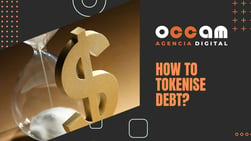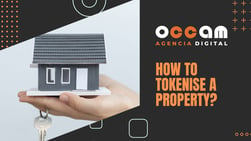Index Content
Before we dive into the journey towards asset tokenisation, we need to be very clear about what a security token is. It is a device used to access a restricted resource electronically. In other words, it is a kind of electronic key that we use to access something.
Now that you are clear, what is asset tokenisation and what is it for? Does it have anything to do with you?
find out!
Asset tokenisation
This is the process of converting real assets into digital assets, thereby also converting the ownership rights of a particular asset into a digital token. If you think about it, it is similar to what we do when we buy cryptocurrencies, although, unlike cryptocurrencies, a digital token can be used in a much wider range of applications and has a lot to do with the blockchain technology that virtual currencies use.
More specifically, a digital token can have several uses:
- In a private network, to grant rights, pay for work, or assign data.
- To facilitate mobile and internet banking transactions.
- In lending, tokenisation avoids duplication.
- In equities, tokenisation makes it easier for companies to interact with shareholders and provide transparent and available information.
- It is also used for the tokenisation of real estate, allowing fractional ownership.
- Liquid assets such as collectibles, works of art or others can be digitised to guarantee their provenance.
Although each company may offer its own methods, in order to make a payment or transfer to third parties you must use the digital token, either from a mobile App or web version. Generally, the basic system consists of entering the security code online to approve the transaction and clicking 'make transfer'. It's as easy as that.
These units of value are created by some companies to govern business models and empower users to interact with their products, "while facilitating the distribution and sharing of profits among all their stakeholders", (William Mougayar).
Its main differences compared to traditional models
It is clear that asset tokenisation is nothing more than the process by which the asset is securitised, while the value is captured and transferred to a token. In this way, we gain the ability to move from a financial point of view.
Its main advantages over traditional models are:
- They have a much larger investment market.
- Any asset can be tokenised, being able to divide them into primary (for example, a work of art) or secondary (more sophisticated business models, such as the future profits of suppliers).
- And they have greater liquidity for token holders.
did you know that the main food of blockchain technology is tokens? A cryptocurrency such as Bitcoin, for example, is a token. And just as they can represent money, they can also represent other things of value. The tokenisation of assets is an intrinsic part of the blockchain that serves to identify and access the platform.
The first thing to keep in mind when we talk about tokenisation is that it is the stored value of a physical object, such as a car, or even something intangible like credit. In reality, you can tokenise any asset that has value to you, eliminating the middlemen when trading goods.
what are the benefits of tokenising assets?
More and more individuals and companies are turning to the conversion of their real assets into digital assets. And this can only be for the following reasons:
- Investors can trade virtual assets that exist in the real world and that, due to their low liquidity, would otherwise have been very difficult to trade.
- They increase portfolio diversification because investors can co-own several assets at the same time.
- The blockchain can be accessed from anywhere in the world and at any time of the day (via a mobile App or web).
- Blockchain technology establishes a much more defined process for collecting documents, information and data about assets.
- Tokens improve asset liquidity and reduce territorial barriers.
- They attract new investors.
- They eliminate information asymmetry during the transfer of ownership.
- No one can delete or change the ownership record when buying tokens.
The asset tokenisation revolution, and the popularity it is gaining over time, has led some countries to start adapting their legal frameworks to digital market models. In fact, Security Token Offerings (STOs) have already arrived in Spain.
The aim is to do away with cross-border regulatory, property rights and tax issues to allow asset tokenisation to become the norm for all asset classes.
do you have doubts about tokenisation? Would you like to digitise your assets but don't know where to start? Tell us what's on your mind.





